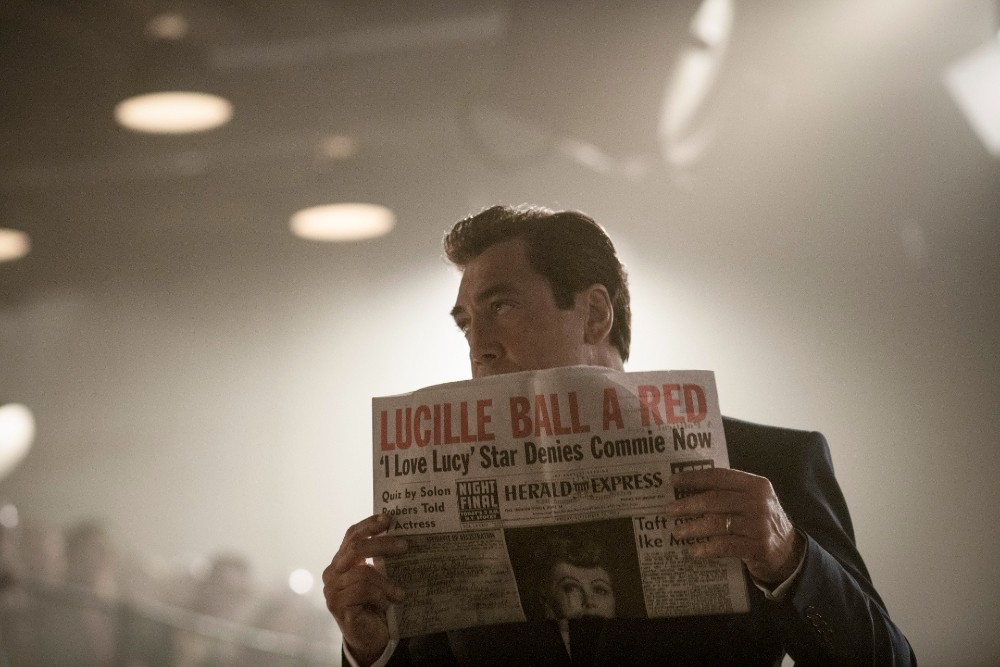
Some 60 million viewers watched I Love Lucy at the height of the sitcom’s run. That extraordinary success forced personal sacrifices that altered the lives of its stars Lucille Ball and Desi Arnaz.
In Being the Ricardos, writer and director Aaron Sorkin uses one critical week in the show’s production to probe into the lives of Ball (played by Nicole Kidman) and Arnaz (Javier Bardem). At the same time, the movie examines the politics and economics that led two talented performers to personal crossroads.
Being the Ricardos also shows the creative process behind the show: how scripts were written, supporting stars William Frawley (J.K. Simmons) and Vivien Vance (Nina Arianda) developing their roles, Ball introducing physical comedy into rehearsals, how Arnaz coped with the network and sponsors.
Cinematographer Jeff Cronenweth ASC not only had to recreate the look of a black-and-white 1950s sitcom, he had to build a period world of backlots, mansions, corporate offices, and nightclubs. Using a Red Monstro camera with ARRI DNA lenses, he brought glamour and intrigue to Sorkin’s layered, fast-paced script.
Cronenweth spoke with Below the Line by telephone from Los Angeles.
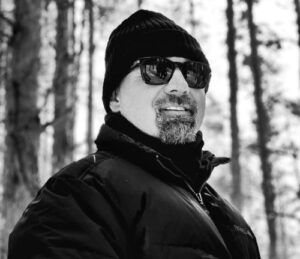
Below the Line: How did you and Aaron Sorkin develop a visual style for Being the Ricardos?
Jeff Cronenweth: We worked together on The Social Network. He wrote it, David Fincher directed it, and I photographed it. When Aaron approached me, he wanted to bring some of the storytelling with the camera that we used on The Social Network. He also wanted to expand his visual storytelling. That was the mantra from the start. We wanted to push the envelopes, break his comfort areas.
Most of this story takes place in 1952, so we looked at movies of the era and, of course, I Love Lucy. We did lots of research, watched footage from behind the scenes, watched the films Desi and Lucy had been in around the time.
Aaron encourages all of the crew to bring things to him. One conversation I wanted to have was what does it mean to do a period piece? You want to avoid the trap of filming a parody of the period. You want to pay homage, but you also want to present it to a modern audience whose mindset might be more along the lines of Game of Thrones.
I always think it’s a good idea to look at how your peers have treated that area. I watched LA Confidential, which Dante Spinotti shot; Carol, with Ed Lachman‘s cinematography; Peggy Sue Got Married, which my father [Jordan Cronenweth] shot. You start to get an idea of what you liked about what they did.
Then it was about colors, the choice of light sources, costumes, hair, makeup, all the things that add details to set you in a time. I remember telling Aaron that his script had a lot of emotional ups and downs. I thought we needed to have contrast, a litany of visual highs and lows. We needed depth, backgrounds with points of light to isolate the characters in their environment. We decided to shoot 8K with 70 millimeter glass, use depth of field to make the characters feel alone or abandoned at times.
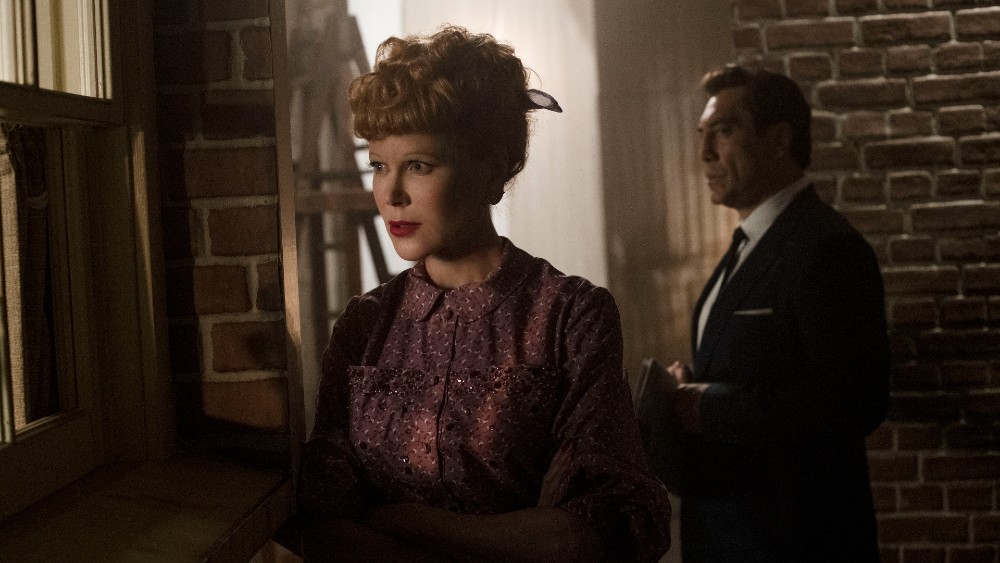
BTL: You’re actually shooting several different time periods, including the late 1930s and early 1940s.
Cronenweth: We flash back about five or six times, to when Lucy did radio, and when her film career didn’t work out. That was a great opportunity for me. It was the era of still photographers who created this kind of hyperreal beauty. You could almost call it fashion noir. It was a combination of hard light and isolated pools of light. Subjects would stand in these pools and look radiant, really beautiful. It was super-dramatic and theatrical lighting.
My grandfather was a portrait photographer for Columbia. In fact he won the last Oscar they awarded for portrait photography. Today still photographers can shoot parallel with us, but back then they had do work on a separate stage, build their own sets and direct their subjects through these prints for publicity. I thought that would be a great way of defining that era separately from the 1952 era.
BTL: I’m wondering how you discuss these ideas with Sorkin.
Cronenweth: He told me he wanted to evolve as a visual storyteller. This is the third film he’s directed after Molly’s Game and The Trial of the Chicago 7. He’s a master writer and storyteller, but in Chicago 7, for example, the story was largely relegated to a courtroom.
Here, he encouraged me to stop him from being comfortable with people sitting and talking. He wanted more staging, blocking, camera movement where appropriate. Keep the audience visually engaged.
This is not an enormous movie. Very few exteriors, not that many grand, wide master shots. It’s intimate, and that becomes challenging because you can’t use cranes and things like that to entice viewers.
On the other hand, we had a lot of characters we dealt with in different circumstances. That part was really wonderful, especially because Aaron put together such a great cast. We were energized by their performances. They gave us all these opportunities to keep viewers engaged, do these little moves and pushes in on faces, watch them process emotions.
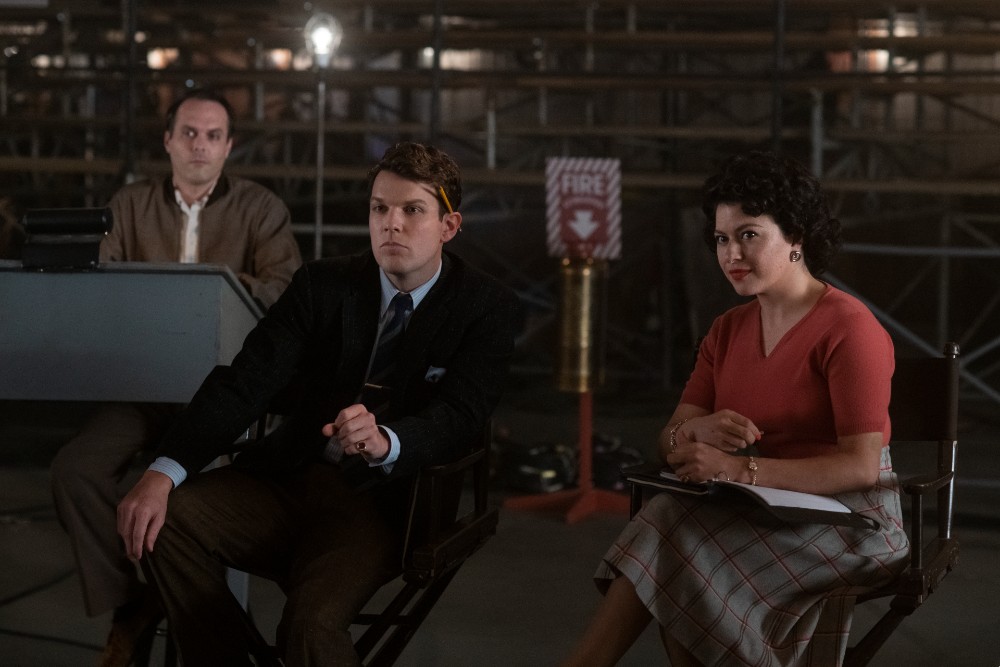
BTL: Chicago 7 may have had a lot of courtroom scenes, but much of this film is on one sound stage. When you’re doing table reads, you have the whole TV cast there and the crew as well. How did you and Sorkin approach that?
Cronenweth: There are maybe 25 or 30 pages of script around those tables, and we go to them two or three times. They become a quagmire of coverage and intent. It all started with how to set up the table and block the actors.
The center of the stage is the I Love Lucy set, which is a huge character in the movie. It’s Lucy’s home, her true happiness, where she found solace. That was the key to staging the table reads, so that the set is always playing a part in the background. We built the scene around that.
We’ve read the script and know the beats, who’s reacting to what, what we need to see. Then we watch the rehearsals. We shot them a number of ways. We did some fairly straight up coverage, we did some unique shots from behind the group, some wide within the group. Then we did some inside out from the back, which are my favorite parts of the scene. We’re outside the circle, but we’re shooting through them back in, and it creates this intimacy and connection between the characters.
BTL: It helps to have such a talented cast delivering the lines.
Cronenweth: Those table reads were our first two or three days of shooting. We were all kind of finding our way. We had time to pre-light. One of my favorite things is blocking out a scene and covering it. Of course, you always have ideas before you get there, but once the cast is there and you see a run0through, you really get into the nuances of where you need to be at what time. We had two terrific operators, Peter Rosenfeld and Lucas Bielan, and the actors really gave us a lot of opportunities.
The first day of shooting tends to be a nervous day because you’re all getting to know each other, and it’s the first day of combat. This just went beautifully, everything flowed, and the shots just kept coming. Everybody had a piece of I Love Lucy buried in them somewhere. Knowing what a good script this was, surrounded by this kind of talent, everybody was just so engaged.
BTL: It must have been difficult staging those complex scenes in Arnaz’s office, where he and Ball are dealing with corporate execs and sponsors.
Cronenweth: Again, we watched the rehearsals, we created a blocking where everybody would give us great angles and overs. It was important in those scenes to feel the presence of those other people, feel the tension. We cheated then around when we needed it, and utilized the two windows. The windows were always going to be my key source. They made the corporate bullies a little more sinister.
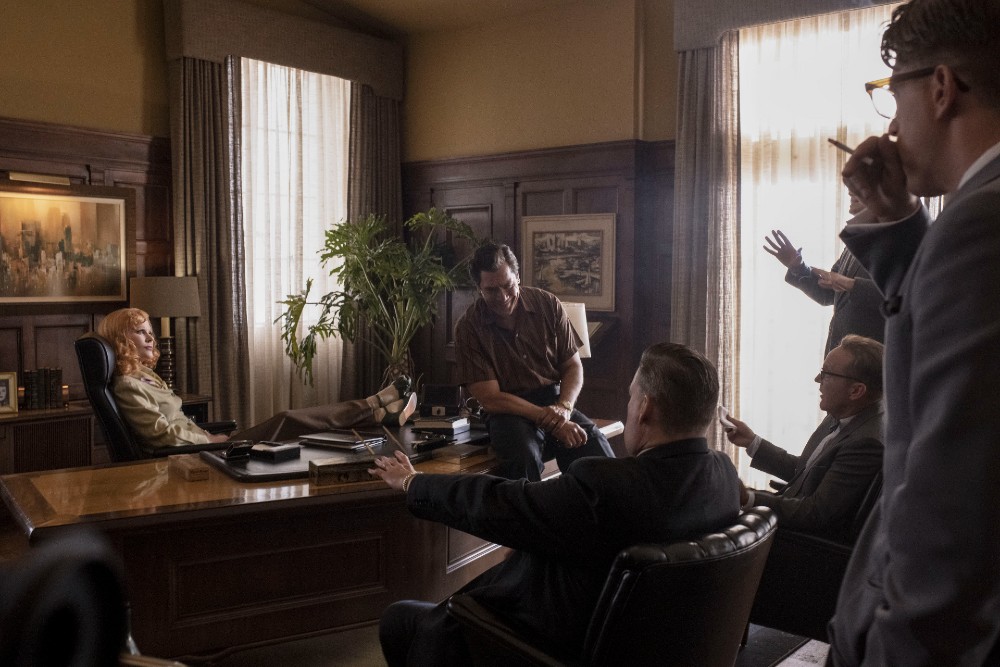
BTL: Did you ever have to sell shots to Sorkin? Convince him to try something?
Cronenweth: [Laughing] Many, many, many times. But he encouraged that. Sometimes I would shoot a video with my iPhone, or pull a reference from the Internet, and talk to him about it.
One scene that he was sensitive to was with Nicole and Javier in bed at night. I suggested keeping the focus on the foreground, lighting them in silhouette, racking [focus] to them when it was complimentary. I came up with an array of images and ended up sharing them with Nicole and Javier and the intimacy counselor you have on set these days.
I’m very proud about one shot in the scene. It’s supposed to be taking place in the Chateau Marmont. It’s morning, Lucy comes in to call her fiancé on the phone and tell him that they’re breaking up. There’s one angle for the scene. We put the camera where the phone was, so it would be looking up at her sitting on the bed.
That’s not usually a shot you want to do for anybody, let alone your leading lady. Nicole and I had a relationship at that point, but she looked at me and was like, “I don’t know…” I said, “I’m telling you, it’s fantastic.” And it was. It’s because of the way she structures her body and the way the light wrapped around and bounced off the sheets. It’s very flattering, but it’s not necessarily a shot that you would ever ask someone to do.
BTL: That angle gave her a lot of power.
Cronenweth: That can be a dilemma too. You’re like, “I need to empower you, I need to be here, but I understand your concerns. So help me with your body language doing this, and I’ll put a light here, and then we’ll both win.”
BTL: There’s an intimate scene in a bar between William Frawley and Lucy Ball. I know it wasn’t written the way that it looks in the film.
Cronenweth: It’s a seedy bar that we used in Gone Girl, where it was a much more brooding and dark place. We wanted contrast, we wanted darkness, but we also wanted the leading lady to radiate. We staged it at the end of the bar, which allowed me to hide some lights. We also had some down lights to accent areas.
I talked with Aaron about how I thought it would be a good idea to shoot it both “inside” and “outside.” We did traditional coverage where we were over JK to Nicole and over Nicole back to JK. We did the master, of course, and some wider two shots. And then we went outside of them, shot over their shoulders from the other side. Some people call it inside out.
A scene with that many pages, you don’t have to worry about crossing the line that much. There’s so much geography in that room. You know where you are, the audience is not going to get lost. She’s talking to him, and he’s only talking to her, so when you jump on both sides or come around, it works perfectly. In a way, it adds some tension to what was already written with a lot of tension.
BTL: You and Sorkin decided which lines you needed to be in close on Kidman or Simmons?
Cronenweth: We talked about it. Aaron said where the weight of the words most resonated when he wanted to be in on them. It was just a rehearsal, then doing these almost imperceptible moves that just kept growing to the point where you have moved in to put more emphasis on the delivery.
BTL: Was this primarily a two-camera shoot?
Cronenweth: Fincher and I always use two cameras. Aaron wanted to use two cameras on this. Because there are so many scenes with quite a few characters, I often used three cameras. When you have table reads with 18 people, you have audiences with 200 people, boardroom meetings, three cameras can help you get a lot of textural and cutaways. But it was a predominantly two-camera show.
BTL: What are you working on now?
Cronenweth: I’m directing a lot of commercials with my brother. There’s Rothko with Sam Taylor-Johnson next year, but we’ll see what happens with that. I’m shooting a documentary with Rick Rubin next week. It’s a full slate.
Being the Ricardos is now available via streaming on Amazon Prime Video.
You can also read our earlier interview with filmmaker Aaron Sorkin and our earlier review.
All photos courtesy Amazon Studios.





